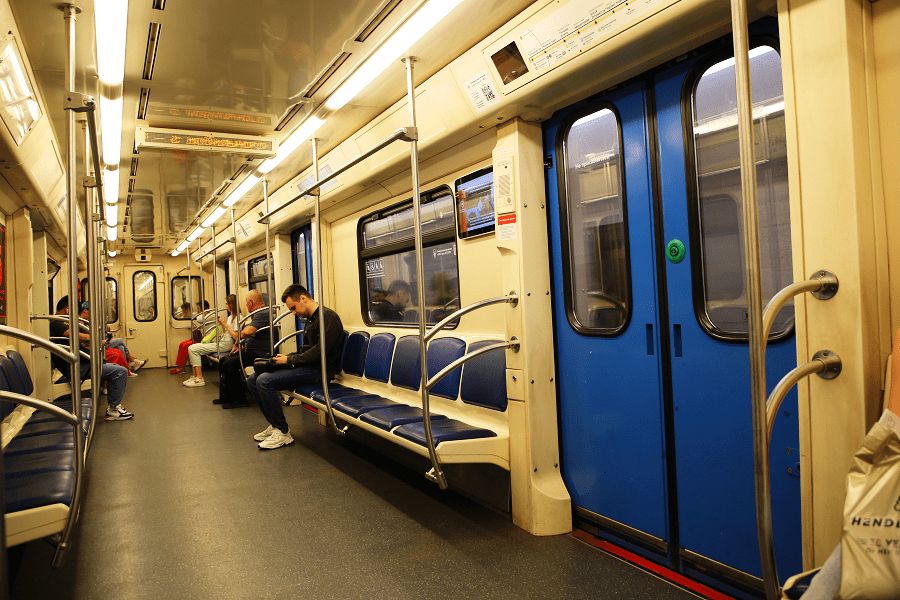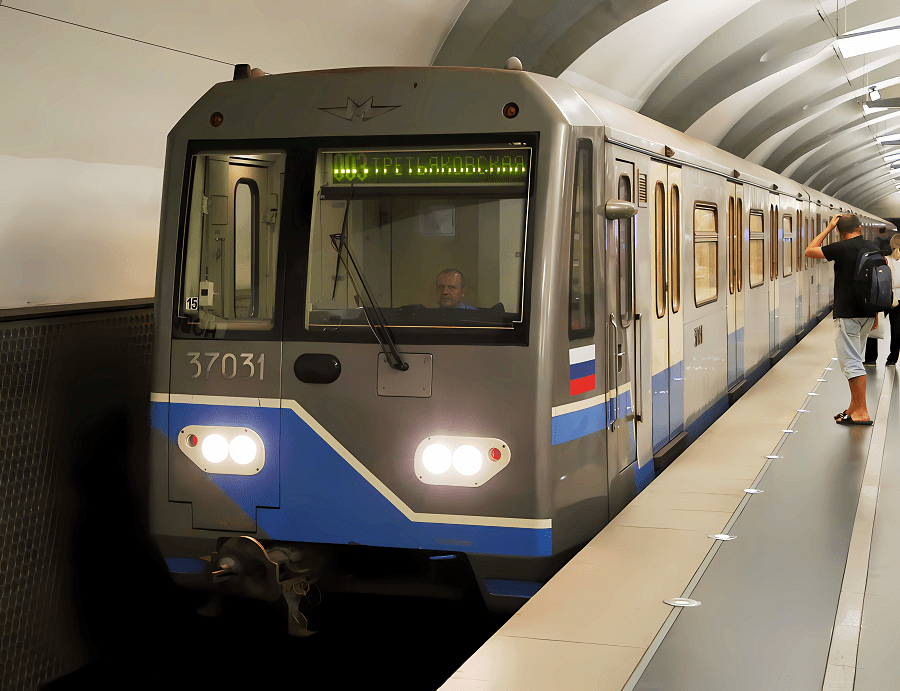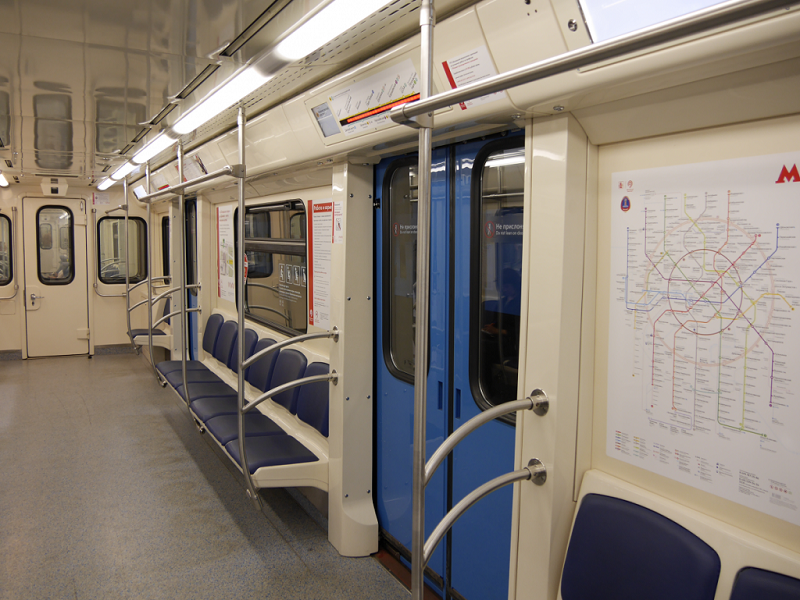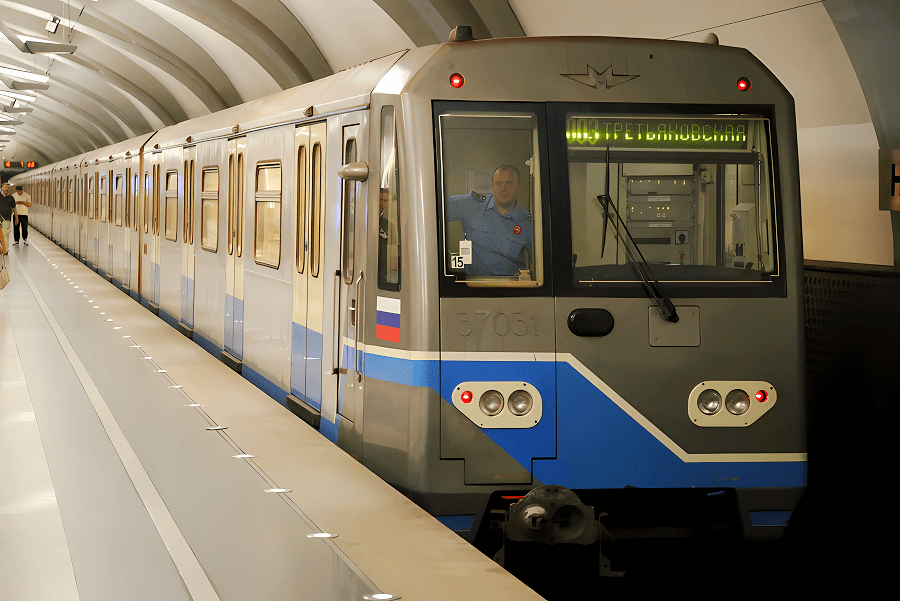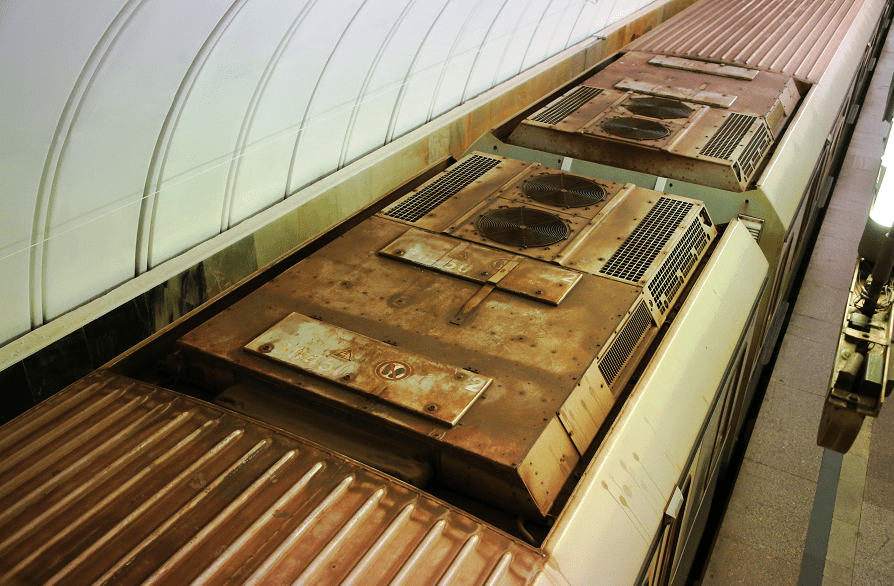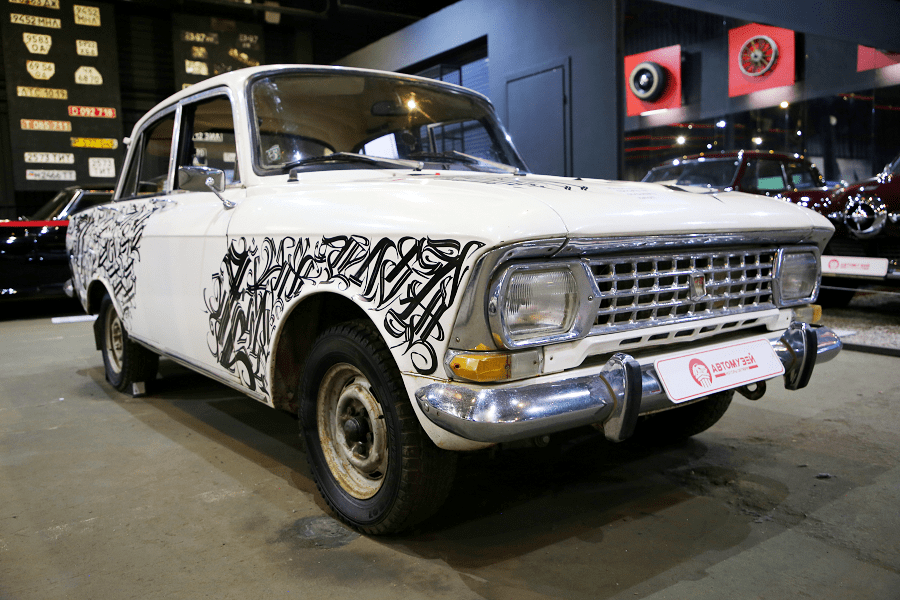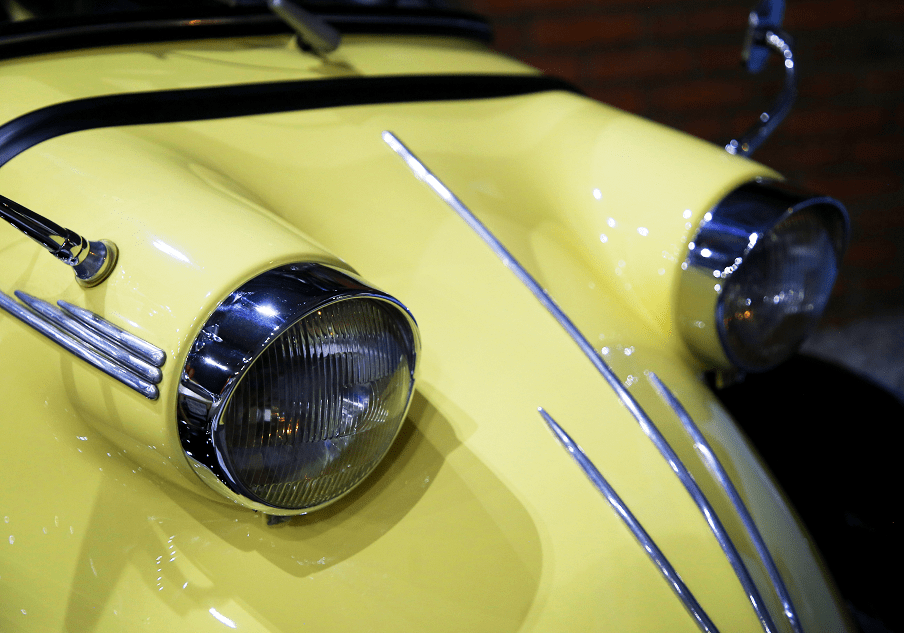81-760/761 “Oka”
81-760/761 «Oka» is a model of electric metro cars produced by the Metrovagonmash plant and the Tver Carriage Works from 2011 to 2016. It got its name in honor of the Oka River. It has common features with the «Baltiets» train (81-725.1/726.1/727.1) of the St. Petersburg metro.
In total, from 2010 to 2016, 168 Oka trains were produced, including 162 eight-car trains of the base model, three eight-car trains of modification A and three five-car trains of modification B. Currently, the base model and modification A are operated in Moscow and the modification B in Baku.
History
The first mention of the start of development of 81-760 cars dates back to November 2005. The initiative to create it belonged to Metrovagonmash, and at first all the work was carried out independently, without funding from the Moscow Metro. The purpose of the development was to create a replacement for the 81-717/714 model using modern technical solutions and at the same time reduce the price as much as possible, since the 81-720/721 “Yauza” and 81-740/741 “Rusich” cars were too expensive.
The first experimental three-car train 81-760/761 was manufactured in 2010. After production, it was sent to the Moscow Metro for testing. On June 19, 2010, at the Maryina Roshcha station on the newly opened section of the Lyublinsko-Dmitrovskaya line of the Moscow Metro, a presentation of the experienced staff was held. During the year, five more cars were manufactured and the train was brought to an eight-car train.
Production of the cars was terminated in 2016 due to the transition to the production of the updated model 81-765/766/767. In total, from 2010 to 2016, 324 head and 972 intermediate cars of the base model 81-760/761 Oka were built, on the basis of which 162 eight-car trains were formed.
General information
Cars of models 81-760/761 “Oka” and modifications are designed for operation on metro lines with a gauge of 1520 mm, electrified by a side contact rail with a voltage of 750 V DC. The trains can be operated on both underground and above-ground sections of lines with a maximum speed of 80 km/h. Basic model trains do not have a through passage between cars, while trains of modifications A and B have inter-car passages that provide through passage for passengers from the beginning to the end of the train. Electric trains are formed from two head motor cars 81-760 and several intermediate cars 81-761, and for trains of modifications A and B, two trailer intermediate cars 81-763 may also be included in the train. The minimum number of cars in a train is two (head cars), the maximum is eight (two head cars and six intermediate cars). The presence of trailed intermediate cars in the train does not impair the dynamic characteristics of the train and allows it to be operated on an equal basis with other trains and overcome all inclines allowed in subways.
Interior
The passenger compartment of Oka cars is equipped with eight double-leaf automatic tilt-sliding doors, four on each side, on the sides of which there are seats located longitudinally. The seats in the carriages are located along the central aisle. The seats between the doorways on each side have six seats, in the end part there are from one to three seats, depending on the type of car, its side and modification.
The walls, ceiling and floor are lined with materials that meet fire safety and sanitary standards. The walls of the cars are lined with easy-to-clean white fiberglass molded panels. The wall panels around the windows of early cars are metallic gray. The floor is gray in color and consists of small fragments of light blue, blue, white and gray. The ceiling of Oka cars consists of aluminum panels and forms three parts in width – a central one above the aisle and two side ones above the passenger seats and entry areas.
The car interiors are equipped with an air conditioning, ventilation and heating system that ensures automatic maintenance of the desired temperature in the cabin: +24°C in summer mode, +18°C in winter mode. Double-glazed windows are installed on the sides of the cars, providing thermal insulation of the cabin. The salons are also equipped with an air disinfection system using ultraviolet radiation.
Assembly: Metrovagonmash (Russia)
Years of production: 2010—2016
Production: 168 units (total: 1335 wagons)
Length (head car/intermediate): 20,120 / 19,140 mm
Width: 2686 mm
Height: 3680 mm
Car material: stainless steel
Capacity: 330 passengers/wagon (42 seats/wagon)
Type of current and voltage: 750 V DC
Powerplant: 4× Hitachi electro traction motor
Output power: 4× 170 kW
Max speed: 90 km/h
Weight: 38 t




